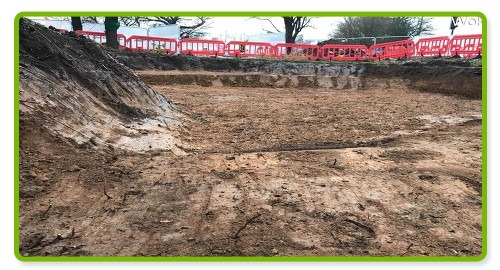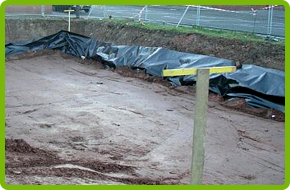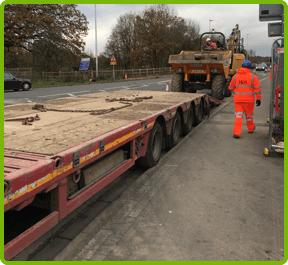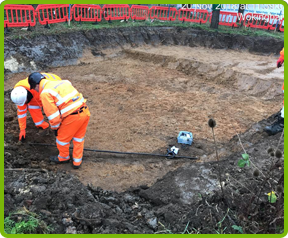On large construction sites where work is in progress, the presence of Japanese knotweed can mean costly delays to the building process. However where possible, Japanese knotweed can be relocated to a quarantined area of the site for treatment later, allowing work to progress as normal on the rest of the site. The Japanese knotweed infestation can be treated with a chemical application at a later, more convenient time.
On-site burial
Japanese knotweed and contaminated soil can also be buried on site inside a heat sealed plastic membrane. This is ideal where no construction work has begun and the site can be fully excavated to make a hole deep enough to contain the knotweed.
The burial site must not be disturbed after excavation and re-burial and the location should be clearly marked on all site plans. The Environment Agency need to be advised that the burial of Japanese knotweed is taking place and all plans must be approved with them. It is very important that every last bit of Japanese knotweed is removed as a piece the size of your finger nail can regrow and create a new infestation.
Excavate and off site removal
This is the last resort and most expensive method but sometimes it just has to be done, especially for those sites where time is a constraint and there is no area on site to manage the waste. All waste will be removed and taken to a licensed landfill site.
Let us eradicate your knotweed problem, call us now on
0800 038 7108 or 07900 082 338







